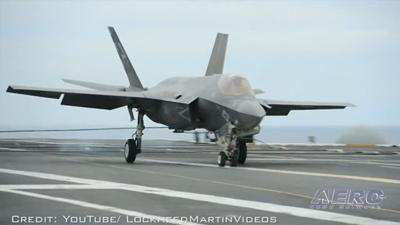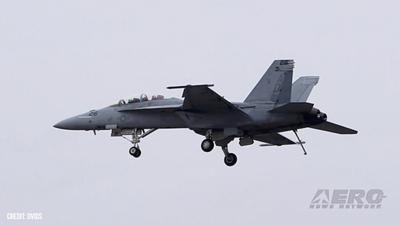Third-Down and 300-Million
The notion that tragedies occur in sets of three has been proved apocryphal. There is no “Rule of Threes;” but there ought to be.
Since November 2021, aircraft carrier mishaps have sent a trio of NATO fighter jets—two of them highly-advanced F-35 Lightning II variants worth well over $230-million—to watery and opprobrious graves.

The string of misfortunes began aboard the British Royal Navy’s HMS Queen Elizabeth flagship, which was returning to the U.K. via the Mediterranean Sea after an uneventful shakedown cruise. The short-takeoff, barrier-arrested-recovery carrier was conducting routine training flights under sunny, Mediterranean skies when one of her F-35Bs—the short-takeoff/vertical-landing iteration of the world’s most expensive fighter aircraft—failed to attain takeoff speed and departed the Queen Elizabeth’s flightdeck for an impromptu swim. A leaked video of the incident showed the jet slowing as it approached the ship’s ski-jump—a radiused ramp peculiar to non-U.S. aircraft carriers. The pilot, who was recovered unharmed, ejected from the aircraft as it toppled over the ramp’s forward edge.
An investigation revealed the Lightning II had departed with an engine-inlet-cover still in place. The loss of the $115-million aircraft, and cost of the subsequent search and salvage operation speak to the catastrophic pitfalls of carelessness in the contemporary naval flight environment. What’s more, the incident stands as a glaring indictment of both the ground and flight crews tasked with the aircraft’s operation.

The second mishap—which saw a U.S. Navy pilot fly his F-35C into the aft edge of the USS Carl Vinson’s (CVN-70) flightdeck—occurred in the South China Sea, directly under Beijing’s watchful, covetous eyes and keen nose. A leaked photograph of the pilotless jet slipping beneath the waves engendered speculation that it was serial number 169305—the first F-35C assigned to the Vinson’s Strike Fighter Squadron 147.
A deep-sea salvage operation was hurriedly undertaken to recover the lost Lightning II, which was expediently, if not somewhat ironically, hauled from 12,400-feet of water by a Chinese-built ship.

The final incident—as if cribbed from a Clive Cussler novel—returns the narrative to the Mediterranean, where on 08 July 2022 a U.S. Navy F/A-18E Super Hornet was blown from the deck of the USS Harry S. Truman (CVN-75) during heavy weather and high-seas. The aircraft was recovered on 03 August 2022 by a Cable-controlled Undersea Recovery Vehicle (CURV) which attached a line by which the sunken Super Hornet was hoisted from 9,500 feet of azure water and ignominy.
Sources within the U.S. Navy have alleged the chains used to lash aircraft to carrier flightdecks are prone to corrosion, and often go unreplaced for years on end. Former U.S. Marine sergeant and AV-8B Harrier II mechanic Tony Rich said of the tie-down chains and loss of the F/A-18: "They break. It happens.” Sgt. Rich likened the U.S. Navy’s loss of the Super Hornet to the Royal Navy’s loss of the Lightning II, stating both were predicated upon “… multiple people screwing up.”
 Sierra Space Repositions Dream Chaser for First Mission
Sierra Space Repositions Dream Chaser for First Mission ANN's Daily Aero-Term (05.10.24): Takeoff Roll
ANN's Daily Aero-Term (05.10.24): Takeoff Roll Aero-News: Quote of the Day (05.10.24)
Aero-News: Quote of the Day (05.10.24) Aero-News: Quote of the Day (05.11.24)
Aero-News: Quote of the Day (05.11.24) ANN's Daily Aero-Term (05.11.24): IDENT Feature
ANN's Daily Aero-Term (05.11.24): IDENT Feature





